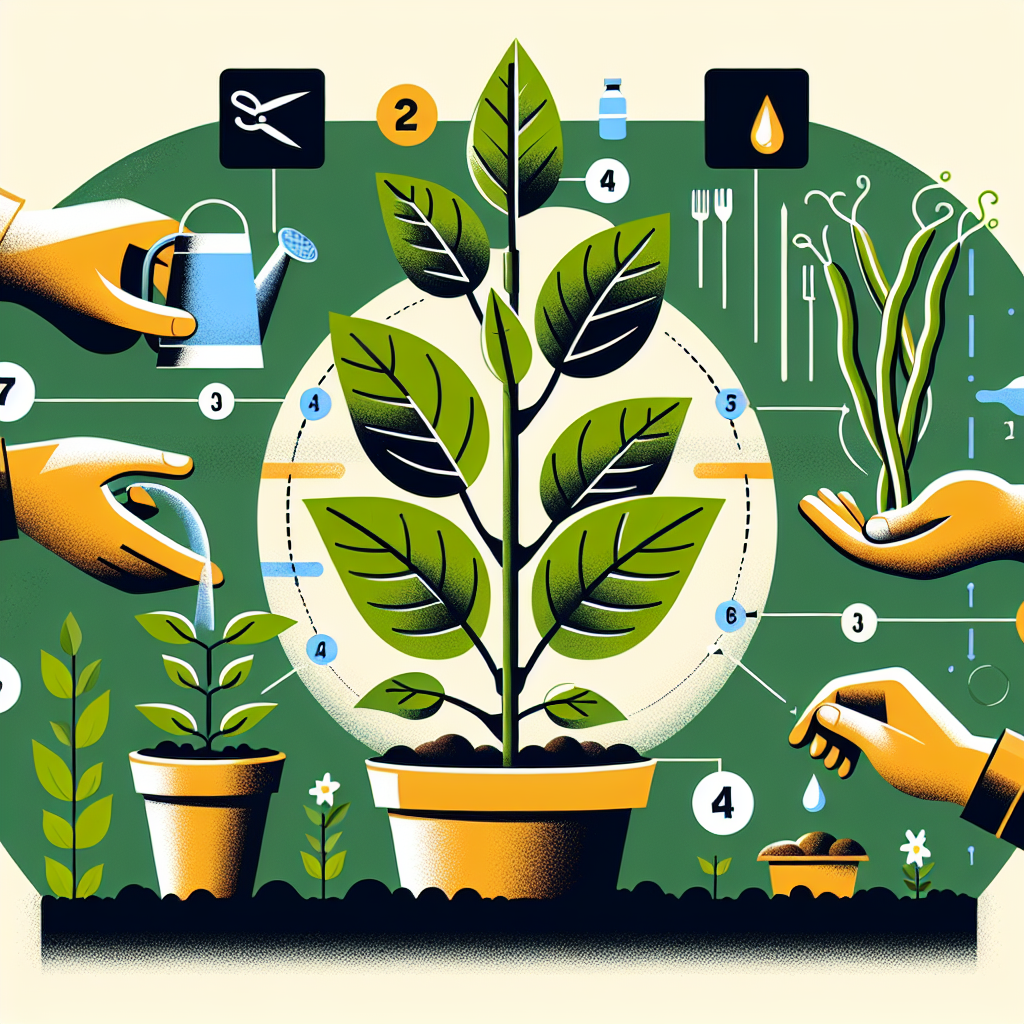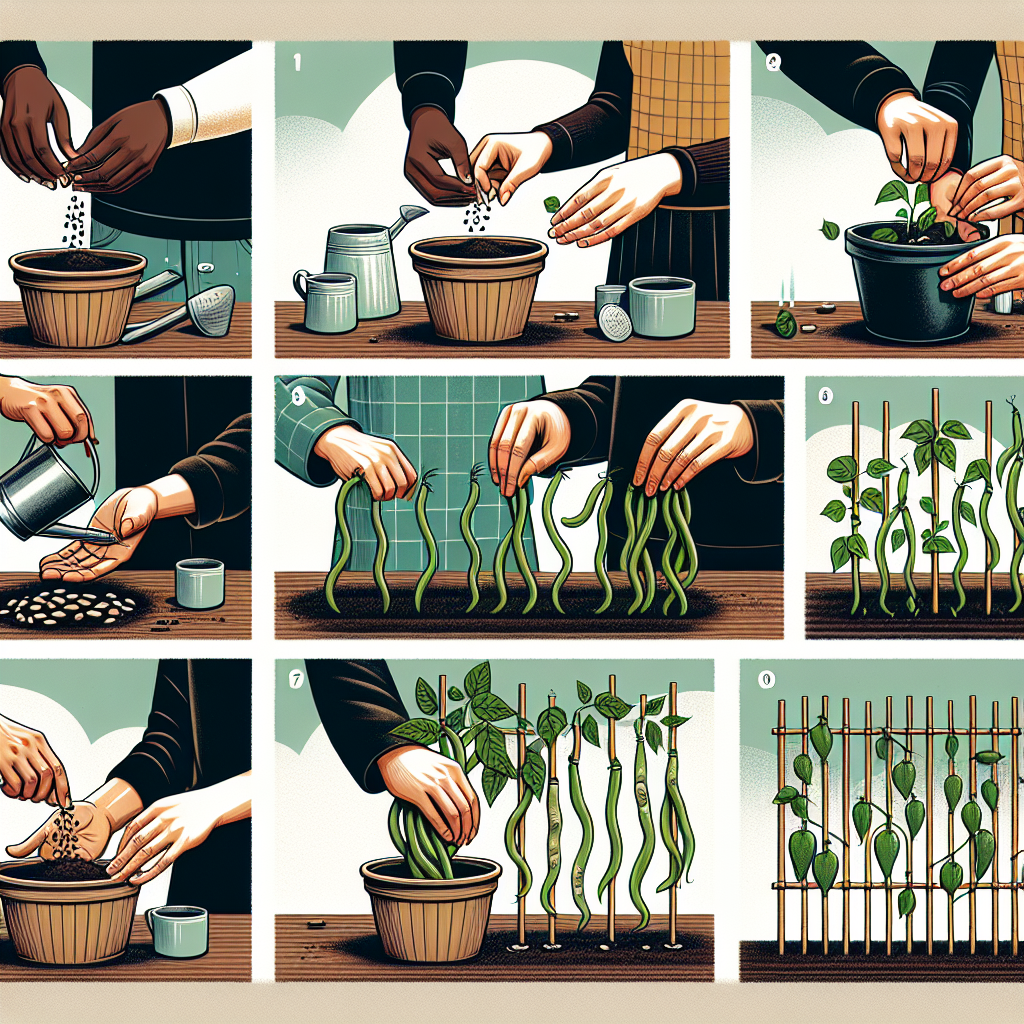The Secrets to Successfully Growing Green Beans at Home
Green beans, also known as string beans or snap beans, are a popular vegetable that can easily be grown at home. Not only are they delicious and nutritious, but they also provide a sense of satisfaction and accomplishment when you can harvest your own produce. Whether you have a spacious backyard or just a small balcony, growing green beans is an achievable goal. In this article, we will uncover the secrets to successfully growing green beans at home.
1. Choosing the Right Variety
Before embarking on your green bean growing journey, it is crucial to select the right variety that suits your specific needs. There are two main types of green beans: bush beans and pole beans. Bush beans are compact plants that do not require support, making them ideal for small spaces and container gardening. Pole beans, on the other hand, require trellises or stakes for support as they tend to climb and vine. Consider the space available to you and select the appropriate variety accordingly.
2. Preparing the Soil
Green beans thrive in soil that is rich in organic matter and well-drained. Begin by preparing the soil before planting. Remove any weeds or debris from the area where you plan to grow your green beans. Loosen the soil using a garden fork or tiller to ensure proper drainage and root penetration.
3. Sowing Seeds or Transplants
Green bean seeds can be sown directly into the ground after all frost dangers have passed in your region. Plant them about 1-2 inches deep into the soil with about 3-4 inches of spacing between each seed, depending on the variety’s requirements. Alternatively, you can start seeds indoors 4-6 weeks before the last expected frost date and transplant them outdoors once they have developed strong roots.
4. Providing Adequate Sunlight
Green beans require plenty of sunlight to grow successfully. Choose a location that receives at least 6-8 hours of direct sunlight daily. If you have limited sun exposure, consider planting them in containers that can be moved around to chase the sun throughout the day.
5. Regular Watering
Green beans need consistent moisture throughout their growing season. Water them deeply but infrequently, aiming for about 1 inch of water per week. Watering in the morning allows leaves to dry during the day, reducing the risk of fungal diseases. Avoid overhead watering if possible, as it can lead to leaf diseases and damage.

6. Mulching for Moisture Retention
Applying a layer of organic mulch around your green bean plants can help retain soil moisture and suppress weed growth. Use materials such as straw, compost, or shredded leaves to create a protective barrier around the plants. Mulching also helps regulate soil temperature and prevents soil erosion.
7. Fertilizing for Nutrient Boost
Green beans are relatively low-maintenance when it comes to fertilization compared to other vegetables. However, adding organic matter like compost or well-rotted manure to the soil before planting will provide a nutrient-rich foundation for your plants. If your plants show signs of nutrient deficiency during their growing season, you can apply a balanced fertilizer according to package instructions.
8. Pest Control
Just like any garden vegetable, green beans are susceptible to pests such as aphids, beetles, and caterpillars. Inspect your plants regularly and handpick any visible pests off leaves if possible. Insecticidal soaps or organic pest control methods may be necessary for severe infestations.
9. Harvesting at the Right Time
Green beans are ready to harvest when they reach their mature length but are still tender and crisp. This usually occurs about 50-60 days after sowing, depending on the variety chosen. Gently snap or cut off the beans from the plant using your fingers or scissors to avoid damaging neighboring stems.
10. Storing and Enjoying the Bounty
To store freshly picked green beans, refrigerate them in a plastic bag or container to maintain their freshness. They can stay crisp for up to a week. Green beans can be enjoyed in various ways, whether steamed, sautéed, stir-fried, added to salads, or used in casseroles and stews. Preserve any excess beans by freezing or canning them for future use.
Growing green beans at home is an enjoyable and rewarding experience. By selecting the right variety, preparing the soil adequately, providing proper sunlight and water, and implementing pest control measures when necessary, you can successfully grow your own green bean harvest. With patience and care, you’ll soon be savoring the flavor of these fresh and nutritious vegetables straight from your garden or balcony!














